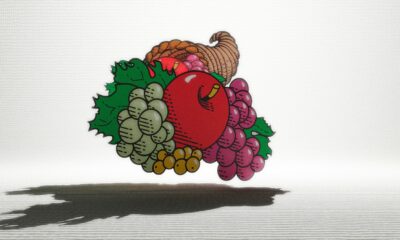Topic
A Journey Through Time from 2023 to 1954

In a world inundated with narratives and interpretations of the past, the concept of Honest History stands as a beacon of truth amidst the fog of historical revisionism. Honest History is not merely about recounting events; it’s about presenting an accurate and unbiased portrayal of the past. Understanding Honest History is crucial in deciphering the complexities of our shared human experience. Over the years spanning from 2023 to 1954, numerous events unfolded, shaping the trajectory of societies worldwide. In this exploration, we delve into the importance of Honest History, the impact of historical revisionism, and the lessons learned from this critical period in time.
The Years 2023-1954
The period from 2023 to 1954 was characterized by significant global events that left indelible marks on history. Technological advancements, social movements, political upheavals, and cultural shifts defined this era. Each year brought forth its own set of challenges and triumphs, contributing to the tapestry of human history. Understanding this timeline provides valuable insights into the evolution of societies and cultures across the globe.
During this period, the world witnessed the aftermath of devastating conflicts, such as World War II, the Korean War, and the Vietnam War. These wars reshaped international relations, redrawn borders, and altered the geopolitical landscape. Additionally, technological innovations, such as the advent of nuclear power, space exploration, and the rise of the digital age, revolutionized the way humans interacted with the world around them.
Social movements also played a pivotal role during these years, advocating for civil rights, women’s rights, LGBTQ+ rights, and environmental conservation. Figures like Martin Luther King Jr., Rosa Parks, Mahatma Gandhi, and Nelson Mandela emerged as beacons of hope, leading movements for equality and justice.
However, amidst these strides forward, the period also saw instances of oppression, colonization, and exploitation. Indigenous peoples, marginalized communities, and colonized nations continued to face systemic discrimination and violence. These injustices underscore the importance of Honest History in acknowledging the darker chapters of our past and working towards reconciliation and reparations.
The Impact of Historical Revisionism
Historical revisionism, the reinterpretation of historical events to align with a particular agenda or narrative, has had a profound impact on how we perceive the past. During the years 2023-1954, various instances of historical revisionism occurred, ranging from whitewashing of atrocities to the glorification of certain figures. Such revisionist tendencies distort our understanding of history and hinder our ability to learn from past mistakes.
One notable example of historical revisionism is the whitewashing of colonial history. Colonizing powers often portrayed their actions as benevolent endeavors aimed at civilizing and modernizing indigenous peoples. However, this narrative ignores the violence, exploitation, and cultural erasure inflicted upon colonized populations. By perpetuating this revisionist history, colonial powers absolve themselves of accountability and perpetuate harmful stereotypes.
Similarly, the glorification of historical figures can distort reality and perpetuate myths. Figures like Christopher Columbus, once celebrated as explorers and pioneers, are now scrutinized for their role in perpetuating colonization and genocide. By critically examining historical narratives, we can uncover the complexities of human behavior and challenge the hero-worship that often accompanies historical figures.
Historical Accuracy vs. Narrative Construction
It’s essential to differentiate between historical accuracy and narrative construction. While historical accuracy strives to present events as they occurred, narrative construction involves weaving a cohesive story that may not always align with reality. Understanding this distinction allows us to critically analyze historical accounts and discern fact from fiction.
Historical accuracy requires rigorous research, reliance on primary sources, and a commitment to objectivity. It seeks to uncover the truth, even when it challenges prevailing beliefs or narratives. In contrast, narrative construction may prioritize storytelling over accuracy, emphasizing certain events or perspectives to fit a predetermined narrative.
An example of narrative construction is the portrayal of historical events through a nationalist lens. Nationalistic narratives often glorify the achievements of a particular nation while downplaying or ignoring its transgressions. This selective interpretation of history serves to reinforce national identity and pride but overlooks the complexities of historical realities.
The Role of Digital Archives and Documentation
In the digital age, the preservation of historical records has taken on new significance. Digital archives provide unprecedented access to primary sources, enabling scholars and enthusiasts alike to delve into the annals of history. However, the digitization of documents also poses challenges, such as ensuring the authenticity and integrity of digital records.
Digital archives offer numerous benefits, including preservation, accessibility, and searchability. They allow researchers to access documents from remote locations, collaborate on projects, and uncover hidden histories. Additionally, digital archives facilitate the preservation of fragile or deteriorating materials, ensuring that future generations can access them.
However, digital archives also raise concerns about data security, privacy, and authenticity. Digital records can be vulnerable to hacking, data breaches, and manipulation. Furthermore, the proliferation of fake news and misinformation complicates the task of verifying the authenticity of digital sources.
Despite these challenges, digital archives have revolutionized the way we study and interpret history. By leveraging technology, we can preserve and share our collective heritage, ensuring that Honest History remains accessible to all.
Lessons Learned from Honest History
By embracing the principles of Honest History, we gain valuable lessons that transcend time and place. It teaches us to approach historical narratives with a critical eye, to question prevailing interpretations, and to acknowledge the complexity of human experiences. Honest History reminds us that the pursuit of truth is a continual journey, requiring vigilance and an unwavering commitment to accuracy.
One of the key lessons of Honest History is the importance of confronting uncomfortable truths. History is replete with instances of injustice, violence, and oppression. By acknowledging these dark chapters of our past, we can work towards healing and reconciliation. Honest History encourages us to listen to marginalized voices, amplify their stories, and strive for a more inclusive and equitable future.
Furthermore, Honest History emphasizes the interconnectedness of global events and their far-reaching consequences. By understanding the root causes of historical phenomena, we can better navigate contemporary challenges, such as climate change, globalization, and political polarization. Honest History encourages us to recognize the interplay between past, present, and future and to consider the implications of our actions on future generations.
Conclusion
Honest History serves as a guiding principle in our quest to unravel the mysteries of the past. As we reflect on the years from 2023 to 1954, let us endeavor to uphold the values of truth and integrity in our interpretation of history. By embracing Honest History, we pave the way for a more enlightened future, where the lessons of the past serve as beacons of wisdom. Through rigorous research, critical analysis, and a commitment to accuracy, we can ensure that Honest History remains a cornerstone of our collective understanding of the human experience.
Topic
Antarvacna: A Journey Through Time, Culture and Evolution

Antarvacna is not just a word; it is a testament to the enduring power of history and culture. Rooted in ancient practices and traditions, Antarvacna has evolved over centuries, embedding itself into the societal framework and leaving an indelible mark on humanity. This article delves deep into the origins, cultural significance, and modern-day relevance of Antarvacna, revealing a story as intricate as the threads of a finely woven tapestry.
Origins of Antarvacna: A Historical Perspective
The origins of Antarvacna can be traced back to ancient civilizations where it played a pivotal role in daily life. Derived from a combination of ancient linguistic roots, the term encapsulates the essence of introspection, creativity, and communal harmony. Early records suggest that Antarvacna was not merely a concept but a practice deeply intertwined with rituals, art, and social gatherings.
In ancient texts, Antarvacna was associated with a holistic approach to life, emphasizing the balance between the material and spiritual realms. It found expression in various forms, from intricate artwork and poetic compositions to ceremonial traditions that united communities.
The Cultural Significance of Antarvacna
Antarvacna transcends mere definition; it is a cultural phenomenon that reflects the values and ethos of societies across time. Its multifaceted nature allowed it to adapt and flourish in diverse cultural settings, becoming a symbol of identity and heritage.
In many cultures, Antarvacna represents the pursuit of knowledge and self-discovery. It is often linked to meditation and reflective practices, serving as a bridge between the inner self and the external world. Festivals and communal events celebrating Antarvacna continue to be significant in various parts of the world, showcasing its enduring appeal.
Antarvacna in Art and Literature
The influence of Antarvacn’a on art and literature is profound. Throughout history, artists and writers have drawn inspiration from its themes, creating masterpieces that capture its essence. Paintings depicting scenes of contemplation and harmony often carry the hallmark of Antarvacna’s philosophy.
Literature, too, bears the imprint of Antarvacn’a. From epic poems to modern novels, the concept has been explored as a metaphor for human connection and the quest for meaning. The enduring presence of Antarvacn’a in creative endeavors highlights its ability to resonate with universal emotions and experiences.
Evolution and Modern Relevance
As societies progressed, Antarvacn’a evolved, adapting to contemporary needs and challenges. In today’s fast-paced world, its principles of balance, introspection, and community are more relevant than ever. Modern interpretations of Antarvacn’a have emerged in various fields, including wellness, education, and technology.
The rise of mindfulness practices and holistic living has brought Antarvacn’a to the forefront of modern consciousness. Workshops, retreats, and digital platforms dedicated to its teachings are gaining popularity, helping individuals reconnect with themselves and their surroundings.
Antarvacna in a Globalized World
In a globalized world, Antarvacn’a serves as a unifying force, bridging cultural divides and fostering understanding. Its universal themes of harmony and introspection resonate with people from all walks of life, making it a powerful tool for cross-cultural dialogue.
The integration of Antarvacn’a into global movements such as sustainable living and mental health advocacy underscores its timeless relevance. By promoting a deeper connection to nature and humanity, it offers a blueprint for a more compassionate and inclusive future.
Challenges and Future Prospects
While Antarvacn’a continues to inspire and guide, it faces challenges in preserving its authenticity amidst commercialization and misinterpretation. Efforts to document and share its history and practices are crucial for ensuring its legacy.
Looking ahead, Antarvacn’a holds the potential to play a transformative role in addressing societal issues such as alienation and environmental degradation. By embracing its principles, we can build a world that values reflection, harmony, and interconnectedness.
Conclusion
Antarvacn’a is a testament to the enduring power of human creativity and resilience. Its journey from ancient traditions to modern relevance showcases the adaptability and universality of its principles. As we explore its rich tapestry of history and culture, we are reminded of the importance of introspection, harmony, and community in navigating the complexities of life. Antarvacn’a is not merely a relic of the past; it is a beacon of hope and a guide for the future.
FAQs about Antarvacna
1. What is Antarvacna, and where does it originate from?
Antarvacna is a concept rooted in ancient traditions that emphasize introspection, creativity, and communal harmony. Its origins can be traced back to early civilizations, where it played a significant role in daily life and cultural practices.
2. How has Antarvacna influenced art and literature?
Antarvacna has profoundly impacted art and literature, inspiring works that explore themes of self-discovery, harmony, and human connection. Its influence is evident in paintings, poetry, and modern narratives.
3. What is the relevance of Antarvacna in today’s world?
In the modern era, Antarvacna is celebrated for its emphasis on mindfulness, balance, and community. It has been integrated into wellness practices, education, and global movements promoting sustainable and compassionate living.
4. Are there festivals or events dedicated to Antarvacna?
Yes, various cultures celebrate Antarvacna through festivals and communal events that highlight its principles of harmony and introspection. These events often include art, music, and meditative practices.
5. How can individuals incorporate Antarvacna into their lives?
Individuals can embrace Antarvacna by practicing mindfulness, engaging in reflective activities, and fostering a sense of community. Participating in workshops or retreats focused on its teachings can also be beneficial.
6. What challenges does Antarvacna face in the modern age?
Antarvacna faces challenges such as commercialization and misinterpretation. Preserving its authenticity and raising awareness about its true essence are essential for maintaining its legacy.
Topic
Uncuymaza: A Living Tapestry of Culture and Identity

Uncuymaza is more than just a craft; it is a vibrant expression of culture and identity. This traditional weaving technique hails from the indigenous communities of Peru, reflecting their unique artistic skills and deep-rooted heritage. Through its intricate patterns and vivid colors, uncuymaza serves as a visual language that communicates stories, beliefs, and traditions passed down through generations. In this article, we will delve into the fascinating world of uncuymaza, exploring its origins, cultural significance, and its evolution in the modern age.
Origins of Uncuymaza
The origins of uncuymaza are intertwined with the history of Peru’s indigenous peoples. For centuries, weaving has been an integral part of Andean culture, with techniques and patterns varying across regions. Uncuymaza, in particular, is believed to have originated in the highlands, where the harsh landscapes and climates demanded both functionality and beauty in textiles. The name itself carries deep cultural connotations, derived from Quechua words that evoke the act of creating something with care and intention.
The early weavings of uncuymaza were crafted from natural fibers like alpaca and llama wool, dyed with plant-based pigments that produced a rich palette of colors. These textiles were not merely utilitarian; they served as symbols of status, ceremonial offerings, and even as a form of currency. Each piece told a story, encoding information about the wearer’s community, social standing, and life events.
The Cultural Significance of Uncuymaza
Uncuymaza is more than an art form; it is a repository of cultural identity and collective memory. Every thread, color, and motif has a meaning, often representing elements of nature, cosmology, and community life. For instance, the stepped patterns frequently found in uncuymaza designs symbolize mountains, a sacred element in Andean cosmology. Similarly, the use of vibrant reds and yellows often signifies vitality and the life-giving force of the sun.
This weaving tradition also plays a crucial role in social and spiritual practices. Textiles are used in rituals, weddings, and other communal celebrations, underscoring their importance in marking life’s milestones. Uncuymaza is also a medium through which knowledge and skills are transmitted. The process of learning to weave is itself a rite of passage, connecting younger generations to their ancestors.
The Artistry of Uncuymaza
The creation of uncuymaza is a labor-intensive process that requires exceptional skill and patience. Artisans begin by shearing alpacas or llamas, spinning the wool into yarn, and dyeing it with natural pigments derived from plants, minerals, and insects. The dyeing process is itself an art, involving precise techniques to achieve the desired hues.
Once the materials are prepared, the weaving begins. Traditional backstrap looms are often used, allowing the weaver to control the tension and intricacy of the patterns. Each design is pre-planned, with weavers drawing on their deep knowledge of symbolism and aesthetics to create textiles that are both beautiful and meaningful.
The finished pieces are stunning works of art, featuring geometric motifs, vibrant color contrasts, and a tactile richness that speaks to the care invested in their creation. No two pieces of uncuymaza are exactly alike, as each reflects the individuality and creativity of its maker.
The Evolution of Uncuymaza in the Modern World
While uncuymaza remains deeply rooted in tradition, it has also adapted to the changing dynamics of the modern world. Today, many artisans are finding innovative ways to keep their craft alive while reaching new audiences. This includes creating contemporary designs that appeal to global markets, incorporating uncuymaza techniques into fashion and home decor, and using digital platforms to share their work with the world.
Nonprofit organizations and cooperatives play a vital role in this evolution, providing artisans with resources, training, and access to fair trade markets. These initiatives not only help sustain the craft but also empower indigenous communities economically and socially.
Despite these advancements, challenges remain. Artisans must contend with the pressures of mass production and the undervaluation of handmade goods. Preserving the authenticity of uncuymaza while meeting the demands of a global market is a delicate balance that requires both innovation and respect for tradition.
Uncuymaza and Sustainability
Uncuymaza exemplifies sustainability in its use of natural materials and dyes, as well as its emphasis on quality and durability. In a world increasingly dominated by fast fashion, this traditional craft offers a model of thoughtful and ethical production. By choosing uncuymaza textiles, consumers can support not only the artisans but also a broader movement towards sustainable and culturally conscious consumption.
Efforts to promote uncuymaza as a sustainable practice are gaining momentum. Workshops and cultural exchange programs educate people about the environmental and social benefits of this craft, encouraging a deeper appreciation for its value. These initiatives also highlight the interconnectedness of cultural preservation and environmental stewardship.
The Future of Uncuymaza
The future of uncuymaza lies in its ability to bridge tradition and modernity. As more people recognize the beauty and significance of this art form, opportunities for its preservation and growth continue to expand. Educational programs, tourism, and collaborations with designers and artists offer promising avenues for sustaining uncuymaza while keeping it relevant in a rapidly changing world.
At the heart of these efforts is the commitment of the artisans themselves. Their dedication to their craft, their communities, and their heritage ensures that uncuymaz’a will remain a vibrant and meaningful expression of culture for generations to come.
Conclusion
Uncuymaza is a testament to the enduring power of tradition and creativity. It is more than a weaving technique; it is a living narrative of identity, history, and artistry. As we celebrate the beauty and significance of uncuymaza, we also honor the people and cultures that sustain it. In every thread and pattern, uncuymaz’a weaves a story that connects us to the past while inspiring a future where tradition and innovation coexist harmoniously.
Topic
Exhentaime: Revolutionizing Time Management for a Balanced Life

In today’s fast-paced world, where every moment seems packed with tasks, responsibilities, and commitments, the need for effective time management has never been greater. But what if we shifted our focus from merely managing time to truly optimizing it? Enter Exhentaime, a time management method that combines traditional techniques with modern insights to help individuals streamline their daily routines, prioritize their goals, and restore balance to their lives. Rather than focusing on the quantity of tasks, Exhentaime emphasizes the quality of time spent and the intention behind each action.
The Birth of Exhentaime
Exhentaime is a modern-day adaptation of traditional time management practices, blending age-old wisdom with contemporary understanding of mental well-being, work-life balance, and personal growth. The term itself is a fusion of “Exhent,” which suggests a state of clarity or mindfulness, and “aime,” representing the French word for “love” or “care.” This symbolic union represents a time management technique rooted in intentionality, self-awareness, and compassion.
At its core, Exhentaime challenges the traditional mindset of filling every minute with activity. Instead, it calls for a more thoughtful approach—one that involves reflecting on your values, goals, and priorities before deciding how to allocate your time. The method seeks to create a harmonious balance between productivity and tranquility, ensuring that the time you invest is both purposeful and rejuvenating.
Intentionality Over Busyness
In a world where “busy” has become synonymous with “productive,” Exhentaime offers a refreshing perspective. The method encourages individuals to stop chasing after constant activity and instead focus on the tasks that align most closely with their long-term aspirations.
Intentionality in time management refers to consciously deciding what deserves your attention. Are you filling your schedule with activities that help you progress toward your goals? Are you spending time on things that nourish your mind and spirit? Or are you simply responding to external demands without considering their true value?
Exhentaime empowers you to answer these questions by providing strategies for prioritization. By focusing on what truly matters, the method advocates for quality over quantity, guiding users to create space for both productivity and creative pursuits. This way, every task you engage in serves a greater purpose, leading to a more fulfilling and balanced life.
A Holistic Approach to Time Management
Unlike conventional time management methods that focus solely on task completion, Exhentaime takes a holistic approach, incorporating aspects of personal growth, well-being, and mental clarity. It acknowledges that time management is not just about getting things done, but also about preserving energy and mental health.
Exhentaime encourages individuals to assess their routines not just for their efficiency but also for their emotional and psychological impact. Are the tasks you’ve set for yourself contributing to your personal growth, or are they draining your energy? The method suggests integrating breaks, moments of reflection, and leisure activities into your schedule, which are just as essential to your overall productivity and creativity as work-related tasks.
This method goes beyond simply optimizing working hours; it creates space for relaxation, self-care, and mindful practices, all of which contribute to a healthier and more balanced lifestyle.
Crafting a Personalized Exhentaime Routine
One of the most appealing aspects of Exhentaime is its adaptability. Unlike one-size-fits-all time management systems, Exhentaime can be tailored to suit individual needs, schedules, and life stages. The key lies in understanding your unique values, priorities, and rhythms.
To begin crafting your Exhentaime routine, start by identifying your core values. What is most important to you in life? Whether it’s career growth, personal relationships, health, or creativity, identifying your values allows you to align your daily tasks with these principles. This brings a sense of fulfillment to even the most mundane tasks, as they become a part of a larger vision.
Next, Exhentaime encourages breaking down your day into segments that honor both your work and personal needs. Schedule time for reflection, relaxation, or engaging in activities that reignite your passions. The idea is not to overcrowd your calendar with appointments but to create a rhythm that balances output with restoration.
As with any new method, it’s important to start small. Introduce Exhentaime into your daily life in manageable increments, gradually allowing it to evolve with your changing priorities. This gradual approach prevents overwhelm and ensures long-term sustainability.
The Power of Reflection and Self-Awareness
Exhentaime places great importance on self-awareness, encouraging individuals to pause regularly and reflect on their goals, accomplishments, and emotional states. This practice of reflection helps to identify any misalignments between daily activities and long-term aspirations.
Journaling is one of the most powerful tools within Exhentaime. Taking a few minutes each day to write down thoughts, feelings, and observations not only helps clarify what’s important but also creates a sense of ownership over your time. It allows you to see patterns in your behavior, recognize any time-wasting habits, and course-correct where necessary.
Reflection also supports mental well-being, providing an opportunity to release any mental clutter and refocus on what truly matters. By incorporating self-awareness into time management, Exhentaime nurtures a sense of inner peace and direction.
Exhentaime and Personal Growth
Personal growth is an integral component of Exhentaime. The method does not solely focus on external productivity but also on cultivating internal growth and self-improvement. It encourages you to set intentional, meaningful goals that align with your values, fostering a deep sense of purpose in your daily activities.
By engaging in time management practices that are both strategic and mindful, Exhentaime helps users discover their potential, strengthen their decision-making abilities, and build resilience in the face of challenges. This not only enhances productivity but also promotes long-term success and fulfillment.
Incorporating Exhentaime into your life can lead to profound personal transformation, as it cultivates qualities such as discipline, focus, and self-compassion. Over time, you may notice an increased ability to prioritize your time wisely, a stronger connection with your deeper desires, and a greater sense of balance in all aspects of your life.
Creating Space for Creativity and Tranquility
In the modern world, many people feel overwhelmed by the constant demands of work, family, and social commitments. Exhentaime provides a remedy for this by emphasizing the importance of creating space for creativity and tranquility amidst the busy schedule.
Creativity is often stifled by the pressure to “do more,” but Exhentaime believes that in order to be truly creative, we must give ourselves the freedom to think, explore, and rest. Whether you’re an artist, entrepreneur, or simply someone trying to bring more innovation into your life, Exhentaime encourages you to build time for creative expression into your routine.
Likewise, tranquility is essential for mental clarity and stress reduction. By scheduling time for solitude, nature walks, or simply sitting in stillness, Exhentaime fosters an environment where peace can thrive even in the midst of busy days.
The Broader Impact of Exhentaime
The broader impact of Exhentaime extends beyond the individual. By promoting intentionality, balance, and mindfulness, Exhentaime has the potential to transform workplace cultures, families, and communities. In organizations, employees who adopt Exhentaime may experience less burnout and greater overall satisfaction, as they are encouraged to prioritize their well-being alongside productivity.
Exhentaime also promotes a more sustainable lifestyle, one where individuals do not view time as a scarce resource to be exploited, but rather as a valuable asset to be invested wisely. This shift in mindset can lead to more mindful consumption, healthier work habits, and a greater sense of global responsibility.
Transforming Our Perception of Productivity
The ultimate goal of Exhentaime is to transform our perception of productivity. In a world that often prioritizes speed and output, Exhentaime reminds us that productivity is not just about getting more done; it’s about getting the right things done with intention and purpose. By embracing this new approach, we can break free from the cycle of busyness and cultivate a life that reflects our deepest values and aspirations.
Incorporating Exhentaime into your life allows you to manage time in a way that supports personal growth, nurtures creativity, and ensures that your daily actions align with your long-term goals. By prioritizing meaningful tasks and engaging in regular self-reflection, Exhentaime enables individuals to live more fulfilling, balanced lives—one where time becomes a tool for transformation rather than a source of stress.
Conclusion
Exhentaime is more than just a time management method; it’s a philosophy for living with intention, purpose, and balance. By embracing this approach, individuals can free themselves from the tyranny of constant busyness and rediscover the joy of living in alignment with their values. Exhentaime encourages us to take control of our time, cultivate self-awareness, and create space for both productivity and relaxation. In a world that constantly demands more, Exhentaime is the answer to living a life that truly matters.

 Nail Salons9 months ago
Nail Salons9 months agoNail Salons in Ridgewood, NJ

 Topic7 months ago
Topic7 months agoMakoshake: A Popular Model and Cam Girl

 Topic8 months ago
Topic8 months agoEvolved Fights: Where Mixed Wrestling Meets Adult Entertainment

 Business8 months ago
Business8 months agoSkyWestOnline: Empowering Employees with Essential Resources

 Topic9 months ago
Topic9 months agoEmbracing the Paradox of Retroya: Where Past and Future Collide

 Uncategorized9 months ago
Uncategorized9 months agoExploring Rutube: Russia’s Dynamic Video Platform

 Topic8 months ago
Topic8 months agoFruit of the Loom: Cornucopia Logo Fact Check

 Nail Salons9 months ago
Nail Salons9 months agoNail Salons in Meriden, CT















